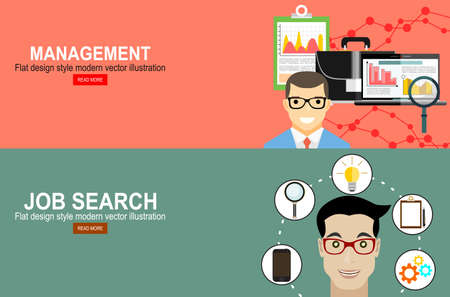1. Understanding the Importance of Tailored Resumes in the U.S. Job Market
In today’s competitive American job market, a one-size-fits-all resume simply doesn’t cut it. Employers across different industries expect candidates to present their skills and experiences in a way that directly aligns with the specific needs and culture of their field. By customizing your resume for each career opportunity, you demonstrate not only your understanding of the role but also your commitment to meeting industry expectations. This approach allows you to strategically highlight the accomplishments, technical proficiencies, and soft skills most valued by employers in your target sector. In many cases, recruiters spend less than a minute scanning each resume, making it crucial to immediately showcase relevant qualifications. Adapting your format, language, and key achievements for each application helps you stand out from other candidates and increases your chances of landing an interview. Ultimately, a tailored resume is more than just a document—it’s a marketing tool designed to position you as the ideal fit within America’s diverse professional landscape.
2. Key Differences in Resume Formats Across Industries
When applying for jobs in the United States, it’s crucial to tailor your resume format and style to fit the expectations of your target industry. Each field has its own preferences for how candidates should present their experience, skills, and achievements. Understanding these differences can significantly improve your chances of passing through initial resume screenings and moving forward in the hiring process.
Industry-Specific Resume Preferences
| Industry | Preferred Resume Format | Key Features |
|---|---|---|
| Tech | Reverse-Chronological or Hybrid | Emphasizes technical skills, projects, certifications; concise bullet points; often includes links to portfolios or GitHub. |
| Finance | Reverse-Chronological | Focuses on quantifiable achievements, progression, and stability; conservative layout with clear sections for education and credentials. |
| Healthcare | Reverse-Chronological or Functional | Highlights licenses/certifications, clinical experience, and soft skills; uses clear headers for qualifications and patient care. |
| Creative Fields (Design, Marketing) | Hybrid or Functional | Allows more visual elements, color, or unique layouts; showcases portfolios, creative projects, and relevant software skills. |
Understanding Format Selection: Management Perspective
From a management perspective, hiring teams look for candidates who not only have the right background but also understand industry norms. For example, an applicant for a tech role who uses a visually creative format may seem out of touch with employer expectations. Conversely, a finance candidate with an overly artistic resume might be perceived as lacking seriousness. Aligning your resume format with industry standards demonstrates professionalism and awareness—key traits considered during promotion evaluations as well.
The Bottom Line for Career Advancement
Selecting the appropriate resume format is more than cosmetic—it’s a strategic move that signals you “speak the language” of your chosen field. By aligning your presentation with what hiring managers expect within their sector, you increase both your interview chances and your perceived readiness for future promotions.

3. Adapting Resume Language for American Employers
When targeting job opportunities in the United States, it is essential to tailor your resume language to meet American employers’ expectations. This means going beyond translating your achievements—your resume should use U.S.-centric terminology, strong action verbs, and quantifiable results to make your accomplishments stand out. Avoid generic phrases and opt for industry-standard vocabulary that demonstrates both familiarity and professionalism within the American context.
Use U.S.-Centric Terminology
Employers in America are looking for candidates who understand local industry standards and workplace culture. Replace non-U.S. job titles or jargon with their American equivalents whenever possible. For example, use “Sales Associate” instead of “Shop Assistant,” or “Project Manager” instead of “Team Leader,” if those are more commonly recognized terms in your target field. Tailoring your language helps recruiters quickly connect your experience to their needs without confusion or misinterpretation.
Highlight Achievements with Action Verbs
Effective resumes in the U.S. emphasize contributions and results rather than simply listing duties. Start each bullet point with a dynamic action verb such as “led,” “developed,” “implemented,” or “streamlined.” These words not only add energy to your statements but also show proactive engagement—a trait highly valued by American employers. Using strong verbs communicates initiative and leadership potential, which are critical for career progression.
Quantify Your Impact with Metrics
American employers appreciate candidates who can clearly demonstrate the impact of their work. Whenever possible, include metrics that quantify your achievements—such as percentages, dollar amounts, or timeframes. For instance, instead of saying “Improved sales,” say “Increased sales by 25% within six months.” This approach provides concrete evidence of your value and makes it easier for hiring managers to envision how you can contribute to their organization’s success.
Management Perspective: Strategic Communication Drives Advancement
From a management perspective, the ability to communicate results in clear, measurable terms signals readiness for greater responsibility and advancement. By adapting your resume language strategically, you position yourself as someone who understands business priorities and knows how to deliver results—a key differentiator for promotions and leadership roles in the competitive U.S. job market.
4. Showcasing Relevant Skills and Experiences by Field
One of the most critical steps in adapting your resume for the American job market is customizing how you present your skills and experiences according to the specific career field you are targeting. Recruiters in different industries prioritize distinct qualifications, so highlighting your transferable skills and tailoring your experience section is essential for standing out. Here’s how you can effectively emphasize what matters most in various sectors:
Understanding Industry Expectations
Each career field in the U.S. has unique expectations regarding which skills and accomplishments take center stage on a resume. For example, technology roles value technical proficiency and project outcomes, while marketing positions may focus on creativity, campaign results, and communication abilities. Researching job descriptions and LinkedIn profiles within your target industry can provide insights into which competencies are most valued.
Strategies for Emphasizing Transferable Skills
- Identify Core Competencies: Review multiple job postings to identify recurring skill requirements.
- Use Industry Language: Mirror the terminology used in job ads to ensure your resume resonates with recruiters’ expectations.
- Highlight Achievements: Whenever possible, quantify your impact (e.g., “Increased sales by 20%,” “Reduced processing time by 30%”).
- Organize by Relevance: Consider grouping related skills or experiences under relevant subheadings for clarity.
Tailoring Experience Sections by Career Field
| Industry | Key Focus Areas | Recommended Resume Style |
|---|---|---|
| Technology/IT | Coding languages, software proficiency, project management, certifications | Technical skills section at top; detailed project bullet points |
| Marketing & Communications | Campaigns managed, content creation, analytics, branding achievements | Quantified results; strong action verbs; creative formatting allowed |
| Finance & Accounting | Financial analysis, reporting accuracy, regulatory compliance, efficiency improvements | Chronological format; clear metrics; concise language |
| Healthcare | Patient care, certifications/licenses, teamwork, process improvement | Categorized experiences (clinical/non-clinical); highlight licensure prominently |
| Education | Teaching methods, curriculum design, student engagement, assessment results | Reverse-chronological; separate teaching from administrative experience if applicable |
| Sales & Customer Service | Revenue generated, client retention rates, negotiation skills, service awards | Award highlights; numbers-driven achievements; testimonials if appropriate |
Practical Tips for Customization Success
- Edit ruthlessly: Remove outdated or irrelevant details that do not serve your current career goals.
- Create multiple versions: Maintain several tailored resumes if you’re applying to more than one industry.
- Add a summary section: Use a concise professional summary to immediately communicate your fit for each field.
- Pilot test: Seek feedback from mentors or professionals already working in your target industry to ensure alignment with expectations.
The key to success lies in demonstrating that your background—regardless of previous fields—translates seamlessly into the role and industry you’re pursuing. By thoughtfully selecting and presenting your skills and experiences with an eye toward industry standards, you’ll maximize your chances of landing interviews and advancing your career in America.
5. Incorporating American Resume Design Trends
When tailoring your resume for the U.S. job market, it’s crucial to understand and apply current American resume design trends that resonate with recruiters and hiring managers across different industries. The visual presentation of your resume can influence whether you pass the initial screening and move forward in the hiring process. Here are some essential style elements, layouts, and formatting tips to ensure your resume stands out while remaining professional and culturally appropriate.
Embrace Clean, Modern Layouts
American employers typically favor resumes that are clean, easy to navigate, and visually balanced. Use clear section headings, consistent margins, and logical flow. Avoid dense blocks of text; instead, utilize bullet points to highlight achievements and responsibilities. White space is your friend—it makes content easier to scan quickly, which is critical in high-volume recruitment environments.
Choose Professional Fonts and Font Sizes
Stick with classic, readable fonts such as Arial, Calibri, or Times New Roman. Avoid ornate or decorative typefaces that may appear unprofessional. Standard font sizes (10-12 pt for body text; slightly larger for headings) help maintain readability both on screen and in print.
Use Strategic Bold and Italics
Employ bold or italics sparingly to draw attention to key information—such as job titles, company names, or quantifiable accomplishments—but avoid over-formatting, which can create a cluttered appearance.
Highlight Results with Quantifiable Metrics
U.S. recruiters appreciate clear evidence of impact. Incorporate numbers, percentages, or other metrics when describing your achievements. For example: “Increased sales by 35% within one year” or “Managed a team of 10 engineers.” This approach is highly valued in the American job market.
Integrate Relevant Keywords
Applicant Tracking Systems (ATS) are widely used by U.S. companies to screen resumes. To increase your chances of passing these automated filters, mirror keywords from the job posting throughout your document—especially in skills and experience sections—while ensuring your language remains natural.
Avoid Personal Information and Graphics
Unlike some international CV formats, American resumes do not include photos, age, marital status, or other personal details unrelated to job qualifications. Additionally, minimize the use of graphics or icons unless you’re targeting creative fields where visual portfolios are expected.
Maintain One-Page Length When Possible
For most candidates—especially those with less than 10 years of experience—a concise one-page resume is preferred in the U.S. If you have extensive experience relevant to senior roles, two pages are acceptable but be sure every detail adds value.
Showcase Adaptability for Different Fields
If you are adapting your resume for new career fields within America, consider adjusting design elements to fit industry expectations—for example, using a more conservative layout for finance roles versus a creative template for marketing positions. Research top performers’ resumes in your target field for inspiration.
By aligning with these American resume design trends and best practices, you’ll present yourself as a polished candidate who understands local professional standards—an essential step toward landing interviews and advancing your career in the United States.
6. Common Mistakes and How to Avoid Them
When international applicants adapt their resumes for the American workplace, several common mistakes can hinder their chances of landing interviews or job offers. Understanding these pitfalls—and how to avoid them—can significantly improve your resumes effectiveness across different career fields.
Overloading with Personal Information
Unlike some countries, American resumes do not include photos, marital status, age, or other personal details. Including this information may not only appear unprofessional but can also introduce legal concerns for employers. Stick to your contact information, professional summary, skills, work experience, and education.
Using Unfamiliar Formats or Lengthy Documents
The standard American resume is typically one page for early-career professionals and two pages at most for those with extensive experience. Submitting a lengthy CV or using a non-standard format may cause recruiters to overlook your application. Always tailor the length and layout to U.S. norms and the expectations of your target industry.
Failing to Quantify Achievements
American employers value results-oriented content. Instead of listing job duties, focus on accomplishments using numbers and metrics where possible (e.g., “Increased sales by 20% in six months”). This approach demonstrates impact and aligns with U.S. hiring preferences.
Using Non-Standard Terminology
U.S. recruiters may not understand terms specific to your home country’s education system or previous roles. Translate job titles, degrees, and responsibilities into their closest American equivalents, and avoid jargon that could confuse reviewers.
Neglecting Keywords from Job Descriptions
Many companies use Applicant Tracking Systems (ATS) to screen resumes. Failing to incorporate relevant keywords from job postings can result in automatic rejection before a human ever sees your application. Carefully review each posting and customize your resume accordingly.
Ignoring Cultural Tone and Professionalism
The tone of American resumes should be confident but not boastful, direct yet professional. Avoid overly modest language as well as exaggerated claims. Proofread carefully—spelling or grammar errors are seen as a lack of attention to detail and can quickly disqualify you from consideration.
How to Overcome These Mistakes
- Research sample resumes in your field within the U.S. context.
- Edit ruthlessly; remove unnecessary details and ensure every section adds value.
- Seek feedback from mentors or professionals familiar with the American job market.
Avoiding these common pitfalls will help you present yourself as a strong candidate who understands both the requirements of the role and the cultural expectations of American employers—giving you a strategic advantage in your career transition.


